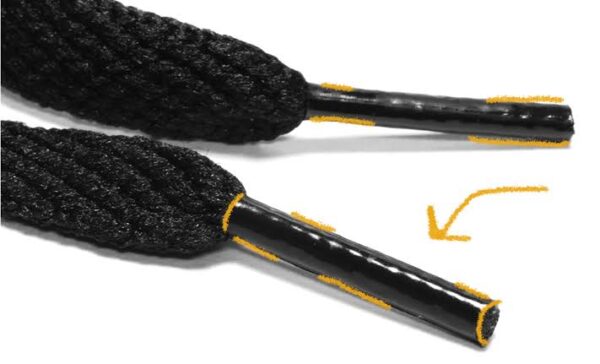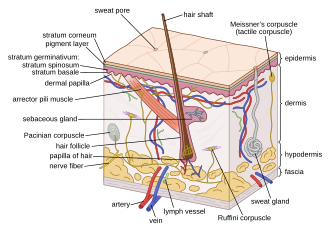 It’s a small, easily overlooked component of your everyday wardrobe, but without it, even the simplest task of tying your shoes could turn into a frustrating ordeal. This seemingly insignificant object is called an aglet — the tiny sheath, often made of plastic or metal, that caps the ends of shoelaces. Though humble in appearance, the aglet plays a surprisingly critical role in both the function and longevity of shoelaces, as well as in the history of fashion and invention.
It’s a small, easily overlooked component of your everyday wardrobe, but without it, even the simplest task of tying your shoes could turn into a frustrating ordeal. This seemingly insignificant object is called an aglet — the tiny sheath, often made of plastic or metal, that caps the ends of shoelaces. Though humble in appearance, the aglet plays a surprisingly critical role in both the function and longevity of shoelaces, as well as in the history of fashion and invention.
An aglet is the small, firm tip at the end of a lace, cord, or drawstring. Most commonly seen on shoelaces, aglets prevent the lace fibers from fraying, making it easier to thread the lace through the eyelets of shoes. Aglets can be made from a variety of materials — plastic being the most prevalent in modern times due to its affordability, but metal, glass, and even stone have been used historically, especially in ornate or ceremonial attire.
The word “aglet” is derived from the Old French aguillette, a diminutive of aguille, meaning “needle.” This, in turn, comes from the Latin word acus, which also means needle. In the Middle Ages, aglets were far more than functional tools — they were often decorative items made of brass, silver, or even gold, used to denote wealth and social status. These elaborate aglets adorned the ends of cords used to fasten garments, especially in military or noble dress.
Historical texts show that aglets were used as early as the Roman Empire, and possibly earlier. In fact, some historians argue that the invention of the aglet may have even predated the button, serving as an essential fastener in ancient clothing systems.
Modern shoelaces without aglets would be almost useless after a short time. Without the aglet to reinforce the lace tip, the strands would unravel with each use. This would make threading laces a tedious task and eventually render the lace unusable. In essence, aglets save time, maintain the integrity of the lace, and contribute to a neater appearance. In sports gear, hiking boots, and military footwear — where functionality is paramount — the strength and durability of aglets can even affect safety and performance.
Beyond footwear, aglets are also found on drawstrings of hoodies, sweatpants, and backpacks. Anywhere a cord needs to pass through a narrow opening, the aglet proves its worth.
Despite their lowly status, aglets have enjoyed moments of fame. One notable reference comes from the animated TV show Phineas and Ferb, in which an entire episode revolves around discovering what aglets are and encouraging others to appreciate them. The episode even included a catchy musical number titled “A-G-L-E-T,” which became an unexpected educational hit among younger audiences.
Designers and manufacturers have also begun to experiment with aglets as points of fashion, creating high-end metal aglets engraved with logos or initials. Custom sneaker brands sometimes offer interchangeable aglets as accessories — a far cry from their utilitarian origins.
With the rise in eco-conscious consumerism, even aglets have not escaped scrutiny. Most plastic aglets are not recyclable and contribute to microplastic pollution when shoelaces degrade. In response, some eco-friendly brands have started using biodegradable materials or replacing plastic with metal, bamboo, or reinforced cardboard. Additionally, some industrial supply manufacturers have developed aglet machines — specialized tools for crimping aglets onto cords efficiently, showcasing how this tiny object has inspired an entire sub-industry.
The aglet is a perfect metaphor for how even the smallest, most unassuming components can have a profound impact. It teaches us that no role is too minor, no part too insignificant. In engineering, design, fashion, or life in general, it’s often the tiny details that hold the larger structure together. Without aglets, shoelaces — no matter how strong or stylish — would fall apart, just like how systems or societies can falter if the small, foundational elements are neglected.
The aglet may not be the flashiest or most celebrated invention, but it is a masterclass in the importance of practical design. Serving as the interface between chaos and order in the daily ritual of tying shoes, the aglet quietly performs its duty, unnoticed but indispensable. In a world increasingly driven by innovation and visibility, the aglet reminds us that true value sometimes lies at the ends — in the overlooked, the humble, and the minute.








